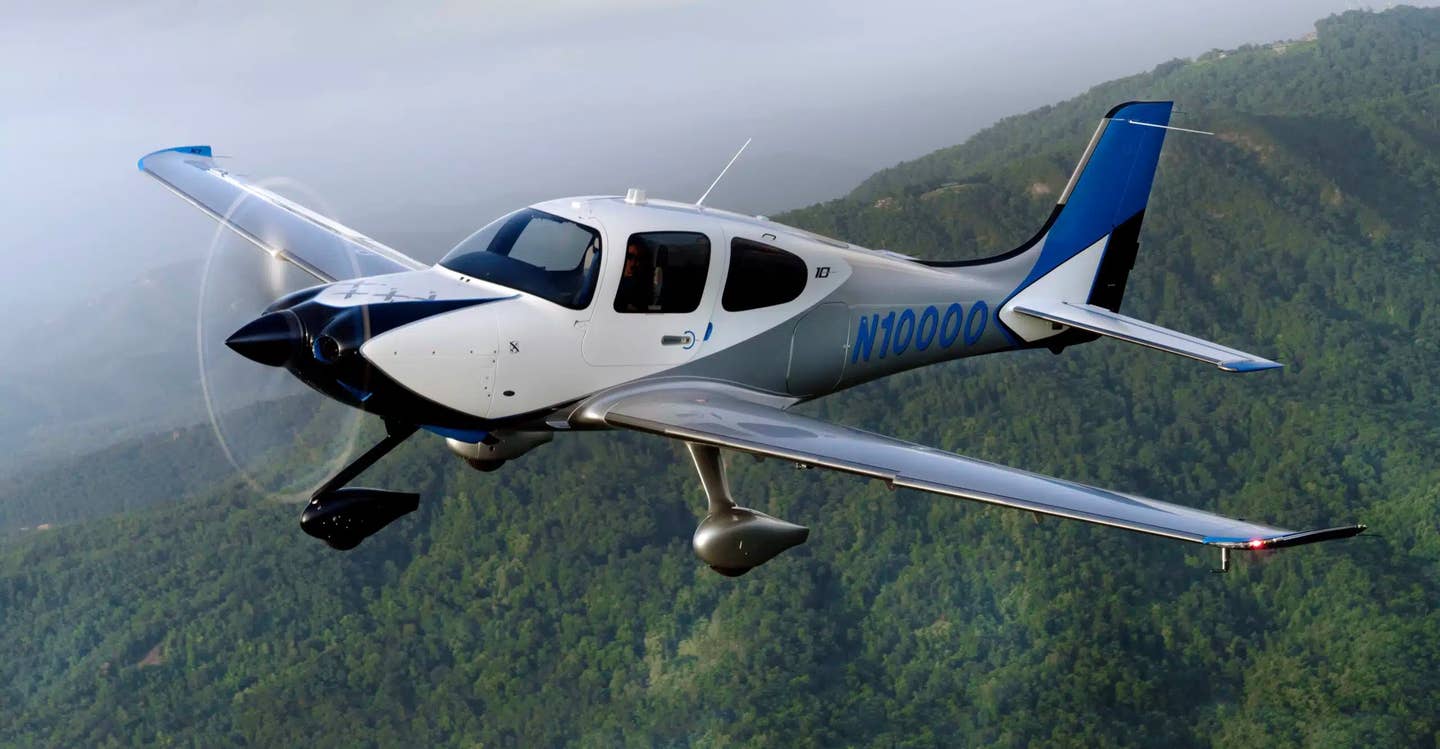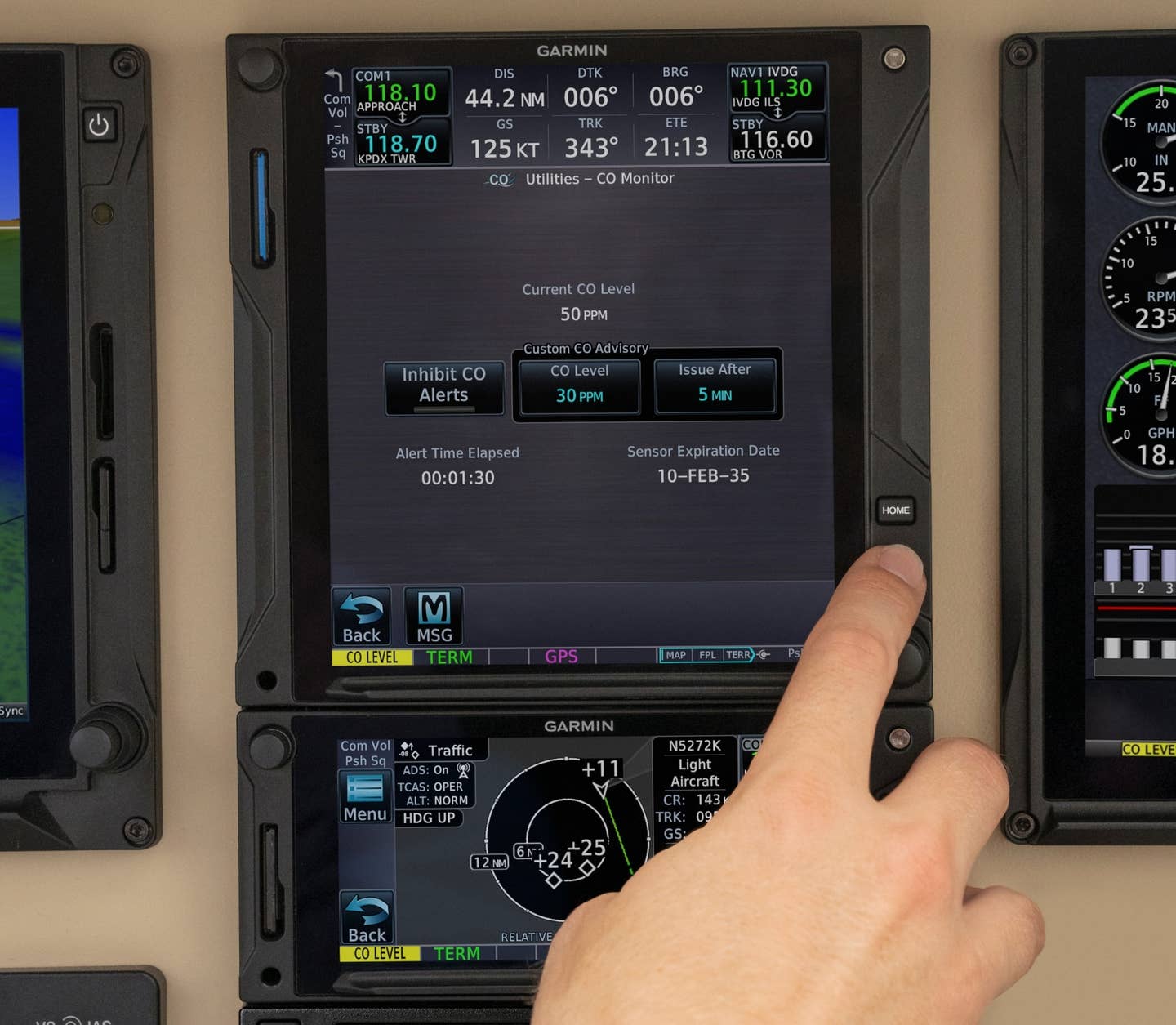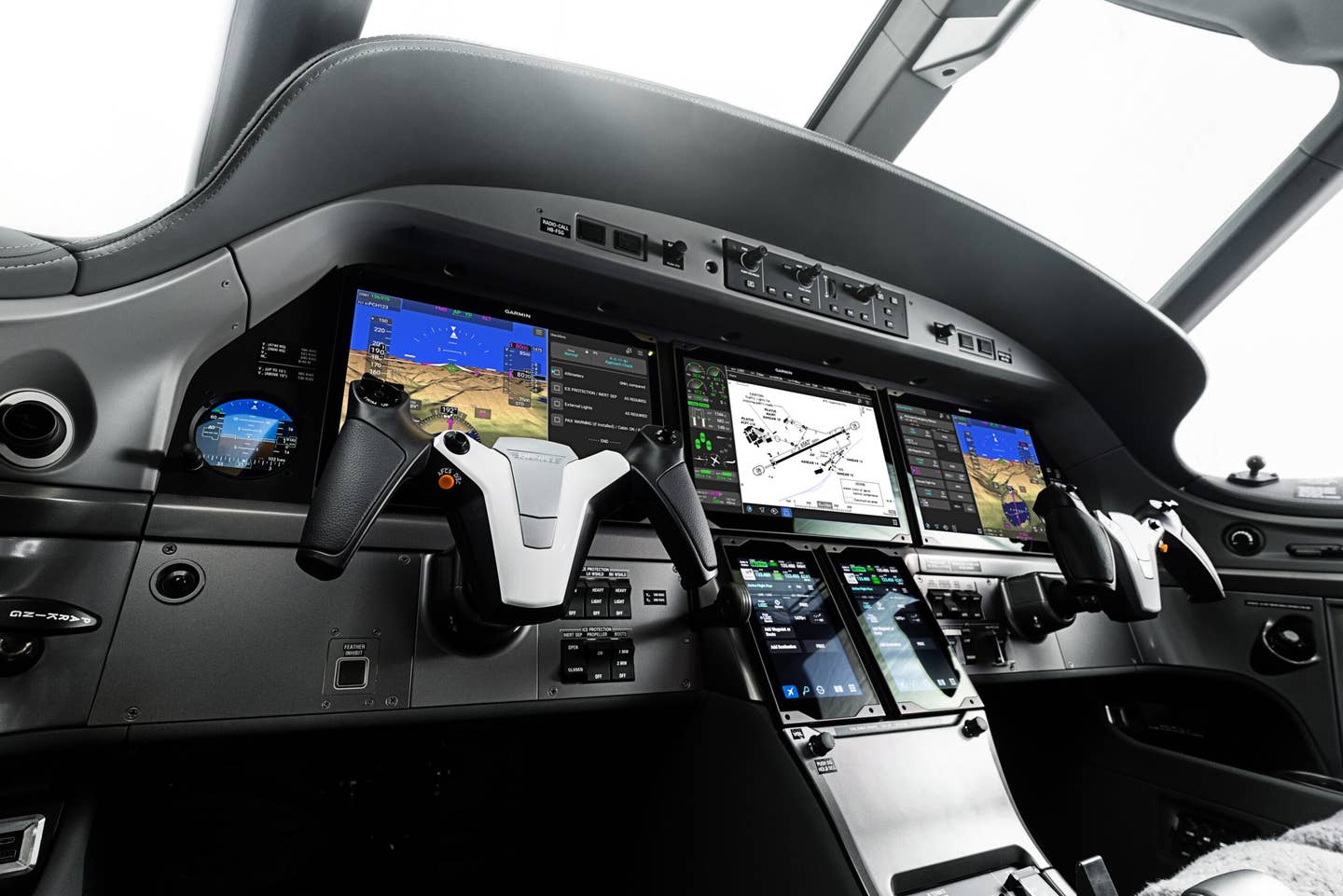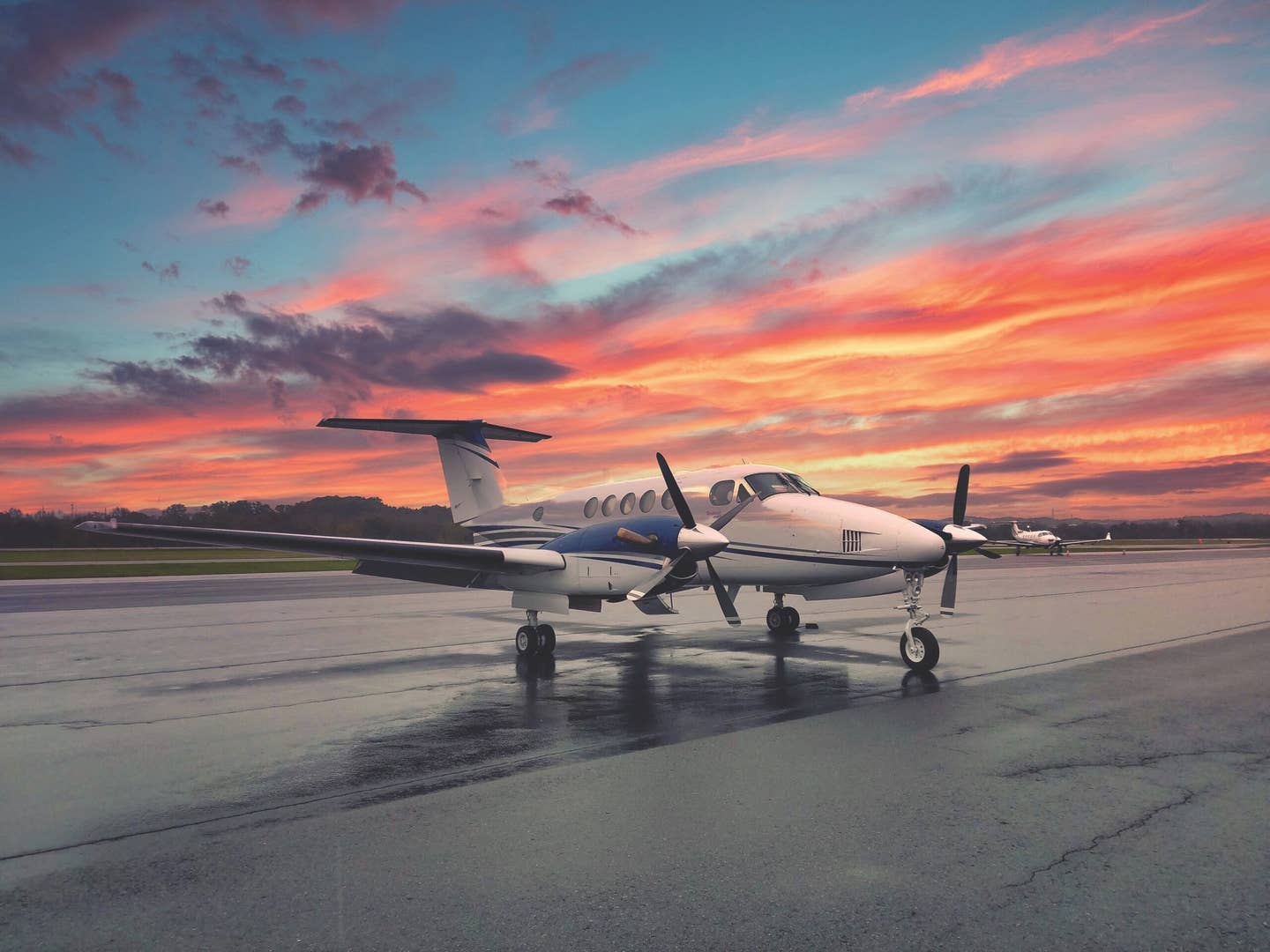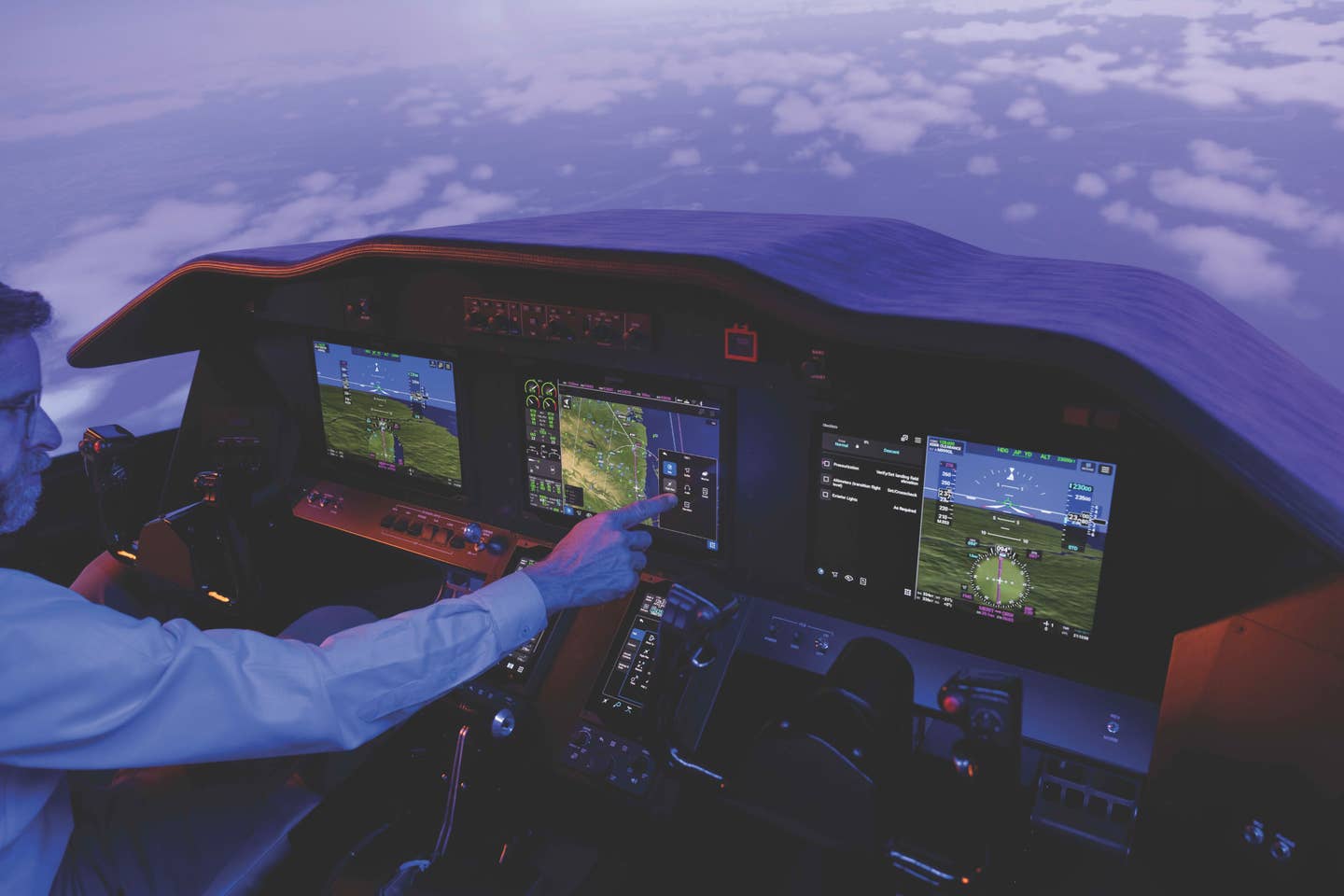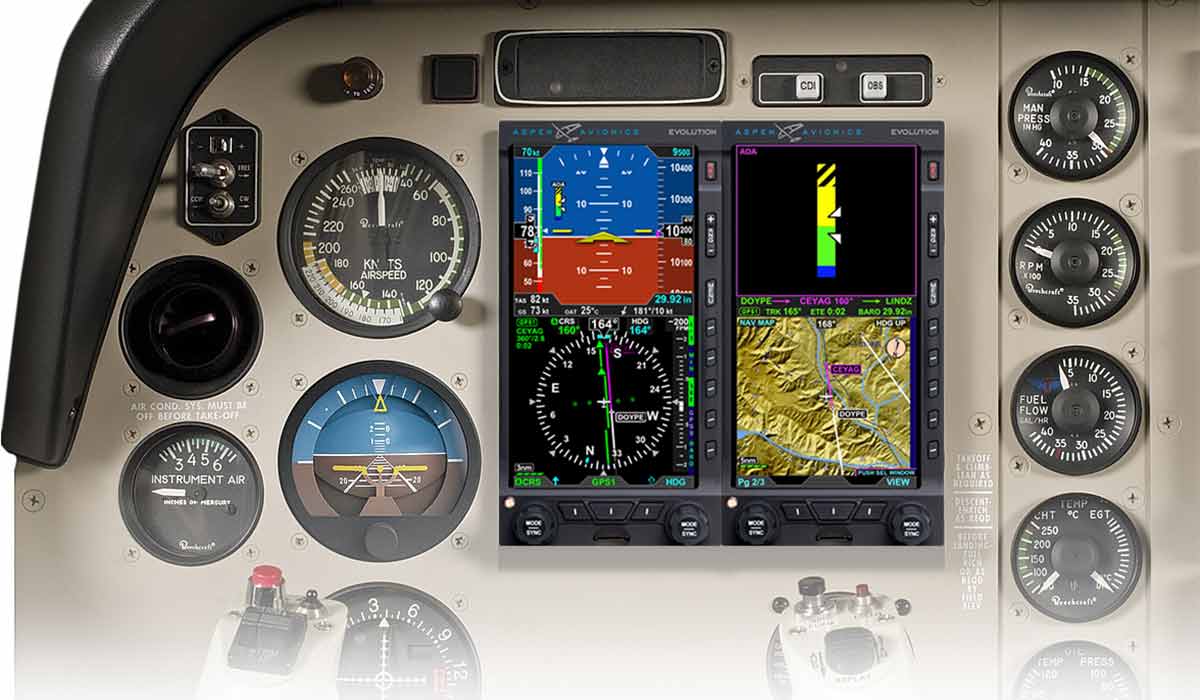
Aspen Avionics’ Evolution Flight Display system offers a glass panel display that is easy to use. Aspen Avionics
I don’t think I’m in a minority when I say that I’m absolutely in awe when I sit in the left seat and look at all the capabilities and safety-enhancing features avionics manufactures have put into today’s glass panel displays.
Traffic, synthetic vision, terrain, obstacles, moving maps, weather and more: Incredible hardly seems to do it justice. And it’s not just big singles and twins that are getting the all-glass treatment. Recently, a transient pilot was proudly showing everyone on the ramp his Cessna 150. It had three Aspen displays and a Garmin 650 touchscreen navigator. It was the coolest – and most technologically capable – 150 I’ve ever seen.
Today’s glass displays from Aspen Avionics, Avidyne, BendixKing, Garmin, Honeywell and Rockwell Collins, just to name a few, provide more informational and situational awareness than a panel full of legacy avionics. And the flexibility of their software enables avionics manufacturer to add secondary displays that appear when you need them and disappear when you don’t.
Take an angle-of-attack (AOA) indicator for example; as you approach the airport at pattern altitude and airspeed it will give you an instant visual reference as to how your aircraft is performing with regard to its critical AOA for its current weight, airspeed and landing configuration.
The technology behind it is pretty amazing. With an Aspen AOA, the software collects data from the aircraft’s AHRS, taking into account gross weight, attitude, bank angle, load factors, CG and airspeed to give you a real-time visual indicator of how close you’re coming to a stall.
Forget those colored arcs on the airspeed indicator, the electronic AOA is one amazing tool that is proven to help prevent loss-of-control accidents – and it’s something no cockpit should be without.
The true beauty of an AOA, and any of today’s glass display capabilities for that matter, is that they are all as beneficial to the sunny Sunday VFR-only pilot as they are to the “I fly 24/7 to minimums” IFR pilot. No matter the trip or weather, the more you know the safer you will fly.
Yet another benefit of today’s glass displays is you don’t have to install the whole package at one time. For example, with Aspen’s unique plug & play hardware design, you can change-out your legacy mechanical ADI/HSI with a single Evolution Electronic Flight Display (EFD) today and then add a second or third unit at any time. You get the capabilities that best fit your needs and budget, and the Aspen display slides right into the space in the panel formerly occupied by a pair of round instruments.
Whether you’re looking to do a complete panel makeover or just want to change out your legacy mechanical instruments for the reliability and multifunctional flexibility of a stand-alone unit, here’s a digital glass display solution to fit practically any need, panel and budget.

Sign-up for newsletters & special offers!
Get the latest FLYING stories & special offers delivered directly to your inbox

